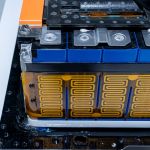Supercharged EV battery life may be possible, thanks to Rice’s ‘hot spot’ discovery

Source: interestingengineering
Author: Aman Tripathi
Published: 7/10/2025
To read the full content, please visit the original article.
Read original articleResearchers at Rice University have discovered that the internal chemistry of battery materials, rather than just their physical structure, is crucial to improving the durability and capacity of lithium-ion batteries. Using high-resolution X-ray imaging, the team observed in real-time how energy reactions within thick battery electrodes often create uneven “hot spots” near the surface, leaving deeper regions inactive. This uneven reaction causes internal cracking, faster degradation, and reduced energy capacity, which limits the performance and lifespan of batteries, particularly those designed to hold more energy.
The study, led by materials scientist Ming Tang, compared two common battery materials: lithium iron phosphate (LFP) and a nickel manganese cobalt oxide blend (NMC). Contrary to prior assumptions that pore structure dictated performance, the researchers found that the thermodynamic properties of the materials primarily determine how evenly reactions spread. NMC electrodes exhibited more balanced and stable reactions, while LFP showed pronounced hot spots near the separator surface. To aid battery design, the team introduced a new metric called the “
Tags
energymaterials-sciencebattery-technologylithium-ion-batterieselectric-vehiclesenergy-storagebattery-degradation